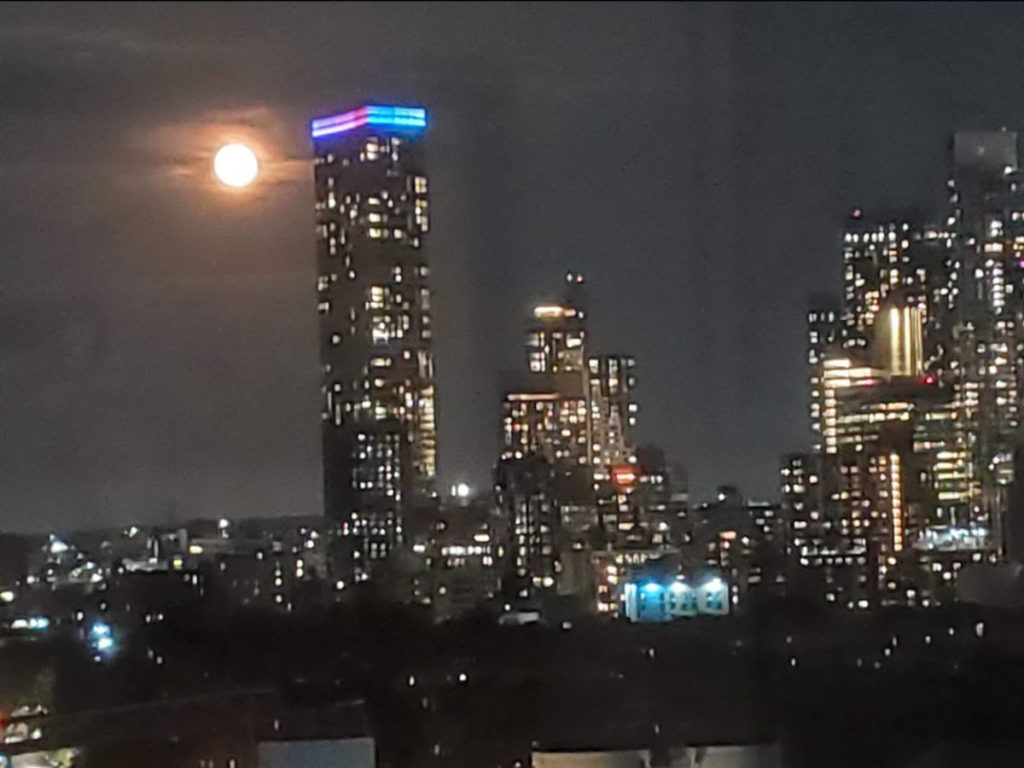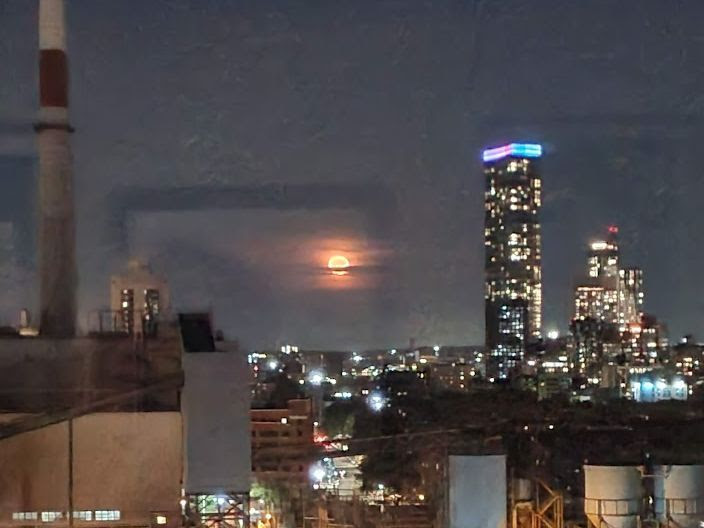Friday, July 15, 2022 – HIS DESIGNS ARE CLASSICS AND KNOWN ALL OVER THE WORLD


FROM THE ARCHIVES
728th Edition
A DEEPER DRIVE INTO
OUR
JAMES RENWICK, JR.
Stephen Blank
The architect James Renwick Jr. was closely associated with our Island. He designed our famous smallpox hospital; he was the supervising architect for the building of our lighthouse and possibly responsible for the design of Blackwell’s Island Penitentiary. Of course, Renwick also designed St Patrick’s Cathedral on 5th Avenue.

James Renwick Jr. https://www.villagepreservation.org/2018/11/09/james-renwick-jr-19th-century-architect-extraordinaire/
Few of us know more about him. So, let’s delve a bit more into the story of one of New York’s most successful architects and one much involved in our history.
Renwick was born in 1820, into a wealthy and well-educated family. His mother, Margaret Brevoort, came from an affluent and socially prominent New York family. His father, James Renwick, was an engineer, architect, and professor of natural philosophy at Columbia College, now Columbia University.
A gifted kid, Renwick attended classes at Columbia at age 12, graduating with a degree in engineering in 1836 and earning a master’s degree three years later. When he graduated, with his father’s connections, he became a structural engineer with the Erie Railroad and then served as supervisor on the Croton Reservoir, acting as an assistant engineer on the Croton Aqueduct. Renwick may have been involved with the High Bridge, but his only known completed work was a fountain in Bowling Green.
He received his first major commission at the age of twenty-three in 1843 when he won the competition to design Grace Church. This was a big deal. The Grace Church congregation was one of the wealthiest in the city, composed of many prominent New Yorkers. The Church had been located at Broadway and Rector Street since its formation in 1808, but the Rector and his congregation were thinking of moving uptown, following the northern migration of its fashionable members.
Renwick was not formally trained as an architect. His Wikipedia biography tells us “His ability and interest in building design were nurtured through his cultivated background, which granted him early exposure to travel, and through a broad cultural education that included architectural history.” (If this is what it takes, I could have been an architect!) Is there a back story? Maybe.
Grace Church would be built on the Brevoort country estate, composed of 86 acres between East 9th and 18th Streets and Fifth Avenue to the Bowery. This was Renwick’s mother’s family. When Henry Brevoort died in 1841, his son, Henry, Jr., began selling off the family lands and, two years later, the Grace Church trustees purchased the large plot at the northeast corner of Broadway and East 10th Street. The abrupt bend in Broadway, attributed to Brevoort’s stubbornness in keeping the new Broadway off his property, provided a perfect site for the church.

As seen here in around 1890, the site at the abrupt turn of Broadway provided an advantageous setting — photo NYPL Collection
Brevoort, Jr.’s nephew was James Renwick Jr., a young engineer with an interest in architecture, but without formal credentials. Nonetheless, Renwick was given the commission to design the new Grace Church – an example of architectural nepotism?
The rector, Thomas House Taylor, had toured Europe looking at church designs. He determined that the new church would be in the Gothic style, a style which sought to revitalize medieval Gothic architecture, competing with the neoclassic style which had dominated public construction since the early days of the Republic. (Until the last decades of the 19th century, Gothic Revival was the preeminent style in Europe and North America.) And so, Grace Church would be the first significant Gothic Revival structure in Manhattan.
Renwick’s youth and inexperience notwithstanding, Grace Church was a huge success. Clearly, Gothic Revival clicked with him, and he became a major actor in this new movement. His Grace Church design was much praised, and for a full generation after it was built, it was the most fashionable church in New York. Construction immediately began on the church rectory and this, too, emerged as a Renwick triumph. And Renwick was launched on a remarkable career.
New contracts came quickly. In 1846, Renwick won the competition to design the Smithsonian Institution Building in Washington, DC. The Smithsonian Institution had been established with funds from James Smithson (1765–1829), a British scientist who left his estate to the United States to create “at Washington, under the name of the Smithsonian Institution, an establishment for the increase and diffusion of knowledge.” (Interestingly, Smithson had never been to the US and had no connections with anyone here.) “The Castle,” as it was commonly called, was built between 1847 and 1855, designed in Romanesque style, as requested by the Smithsonian Board of Regents

Smithsonian Institution Building, Washington, DC. Wikipedia
In 1849, Renwick designed the Free Academy Building (City College of New York) at Lexington and 23rd. It was one of the first Gothic Revival college buildings on the East Coast. The building was plumbed for both water and illuminating gas and on each floor was found the last word in modern innovations—drinking fountains supplied with fresh water from the Croton Reservoir.

photograph from the collection of The New York Public Library
Soon, he went on to design what is considered his finest achievement, and his best-known building, St. Patrick’s Cathedral. He was chosen as architect for the Roman Catholic cathedral in 1853, construction began in 1858, and the cathedral opened in May 1879. St Patrick’s was built in what was the rural fringe of the city. It faced Columbia University gardens across 5th Avenue, and hospitals, asylums, and other public institutions were found along the nearby blocks on the avenue. The church’s design included references to the variety of Gothic styles from European nationalities that had become part of the New York Catholic Diocese.

https://saintpatrickscathedral.org/history-heritage
| Renwick’s commissions included the Corcoran Gallery of Art (now home to the Smithsonian’s Renwick Gallery), in the Second Empire style, in Washington DC (1859–1871); first major buildings on the of Vassar College campus (1861–1865); Saint Bartholomew’s Church (1871–1872) at Madison Avenue and 44th Street (now demolished); All Saints’ Roman Catholic Church (1882–1893) in Harlem. Renick was responsible for the main building of the Children’s Hospital on Randall’s Island, the Inebriate and Lunatic Asylums on Wards Island and, of course, his work on our island. Not all of Renwick’s creations were public buildings. He designed the St. Denis Hotel, completed in 1853, which stood at the corner of East 11th Street and Broadway. The property, owned by the Renwick family, had been given to them by Henry Brevoort and the hotel was named for its first proprietor, Denis Julians. It was said to be “one of the handsomest buildings on Broadway” by Miller’s New York As It Is, Or Stranger’s Guide-book to the Cities of New York, Brooklyn and Adjacent Places. The St. Denis originally featured elaborate terracotta ornament, meant to compliment and reference Grace Church across the street. It was host to numerous historical figures over the course of its lifetime, including President Abraham Lincoln, First Lady Mary Todd Lincoln, Ulysses S. Grant, Mark Twain, Roscoe Conkling, Chester A. Arthur, P.T. Barnum, and Sarah Bernhardt. |
 The St. Denis as seen on a postcard, circa 1908. The Renwick is a loft building, running the entire block from Broadway to Fourth Avenue behind Grace Church, designed in 1887. It was meant as a utilitarian structure for offices, storage, and manufacturing, but it features vivid Gothic detail to serve as an appropriate backdrop to Grace Church. Aside from signage, the building is almost completely intact to its original design, from the gothic arches and tracery to the more robust, industrial Romanesque detailing of the Fourth Avenue façade. One architectural historian writes, “The harmony between this structure, built as a store and manufacturing building, and one of the most delicate and important Gothic Revival structures in the United States, is nothing short of remarkable”. |
 https://www.villagepreservation.org/2019/11/15/why-isnt-this-landmarked-808-broadway-the-renwick/ Renwick was involved in several housing developments this same area, south of Union Square. One is what is sometimes called “Renwick Row,” ten houses at 20-38 West 10th Street built in 1856 (except for No. 38, built in 1858). This row or “terrace” of houses was built in the Anglo-Italianate style and clad in brownstone, with a continuous rusticated base and second-floor balcony originally spanning the entire row. |
 24 & 26 West 10th Street https://www.villagepreservation.org/2018/11/09/james-renwick-jr-19th-century-architect-extraordinaire/ Another terrace attributed to Renwick is the Renwick Triangle, at the intersection of East 10th Street and Stuyvesant Street. Also Angle-Italianate in style, this terrace fronts both Stuyvesant Street (Nos. 23-35) and East 10th Street (Nos 114-128), with a dramatic, acutely cornered building at the tip of the triangle. |
 Renwick Triangle https://www.villagepreservation.org/2018/11/09/james-renwick-jr-19th-century-architect-extraordinaire/ Renwick was well connected in society from his birth, with family wealth so that he never had to work, clearly extremely intelligent, enjoyed a very active and impressive career and was highly regarded during his lifetime. He married once, to Anna Lloyd Aspinwall, had no children, and so far as I can tell, was involved in neither financial nor marital hanky-panky. He died in 1895 at his home at 28 University Place and his obituary in The New York Times described him as “one of the foremost architects in this country.” Stephen Blank RIHS July 13, 2022 |
DID YOU CATCH THE WONDERFUL FULL MOON LAST NIGHT?
FRIDAY PHOTO OF THE DAY
SEND YOUR ANSWER TO:
rooseveltislandhistory@gmail.com

THURSDAY PHOTO OF THE DAY
Island of Seguin. View from The Cité musicale de l’ile Seguin, Boulogne-Billancourt. Paris, France. New Concert Hall. Opened April 2017.

All image are copyrighted (c) Roosevelt Island
Historical Society unless otherwise indicated:
Sources
https://nypost.com/2018/06/06/the-secret-legacy-of-the-architect-behind-st-patricks/
https://www.villagepreservation.org/2018/11/09/james-renwick-jr-19th-century-architect-extraordinaire/
https://www.preservenys.org/blog/south-of-union-square-master-architect-james-renwick-jrhttp://daytoninmanhattan.blogspot.com/2020/12/james-renwick-jrs-1847-grace-church.html
RIHS (C) FUNDING PROVIDED BY ROOSEVELT ISLAND OPERATING CORPORATION PUBLIC PURPOSE GRANTS CITY COUNCIL REPRESENTATIVE BEN KALLOS DISCRETIONARY FUNDING THRU DYCD


Copyright © 2022 Roosevelt Island Historical Society, All rights reserved.Our mailing address is:
rooseveltislandhistory@gmail.com



Leave a comment